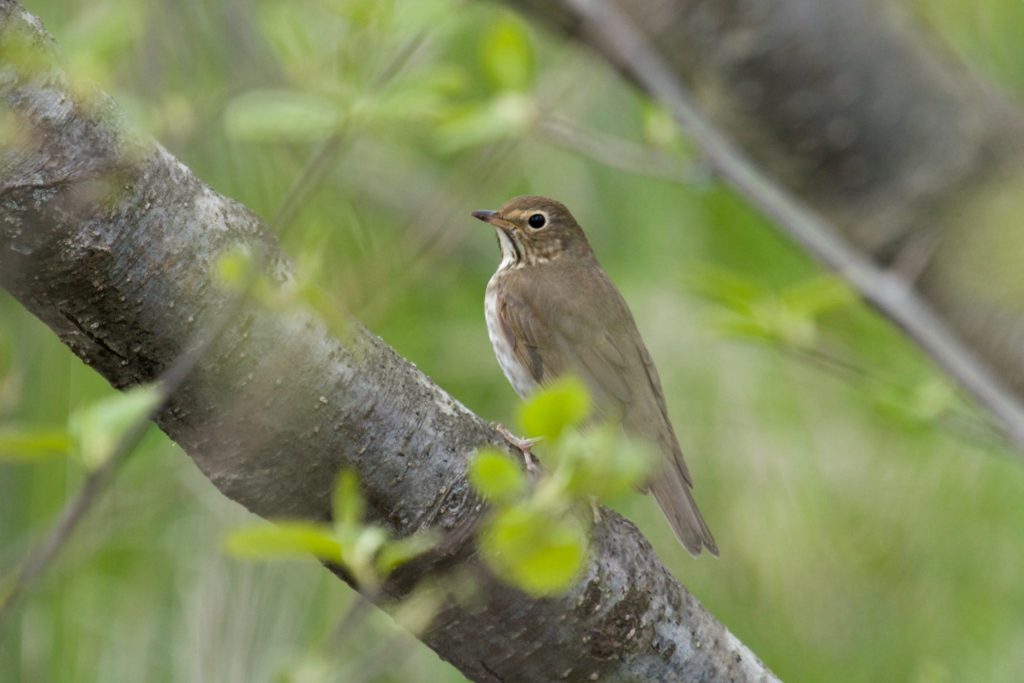With the onset of summer and all that goes with it, it’s good to remind ourselves of the life around us and be grateful for it. Even if it includes mosquitoes. Here are my top 10 reasons that summer on the Lakeshore is wonderful, in no particular order:
1) Cooler by the Lake. When the really hot days happen this summer, I will be grateful to live in Manitowoc and work in Two Rivers. The cooling effect of the Lake makes possible the presence of wonderful northern plants that need the cool, moist air that is moderated by the giant sink of cold water next to us. Those plants make northern species of wildlife feel at home – warblers and thrushes and a hundred other species of birds along with other animals of all kinds. If you want to be warm, you can always drive a half-hour inland, but our cool maritime climate makes us special.
2) Migratory highways- along the Lakeshore all sorts of animals migrate: birds and butterflies, even mammals. We are poised right in their path and if we provide a little habitat for them some will stay all summer.
3) A string of pearls- decades ago people around here set aside areas along the Lake where people could go to experience wildlife, not knowing about the importance of migratory stopover sites and such. Now we are able to enjoy the wildlife of such places as the Rahr School Forest, Point Beach, Woodland Dunes, the Mariner’s Trail shoreline, Little Manitowoc, the Manitowoc Harbor area, Silver Creek park, Point Creek preserve, and Fischer Creek park. These places also provide important rest stops for migratory wildlife.
4) The growing forest- there is actually more forested land in Manitowoc County than there was years ago. When I look at old photographs of my grandfather’s land and the area around it, I am amazed at how desolate the area appeared. A lot of the forest here was harvested and converted to farmland years ago and has been growing back, although probably with different tree species than were found originally. As my brother and I try to restore the land my grandfather acquired almost 75 years ago, we take out a lot of non-native species and plant native trees and shrubs. This time of year it’s gratifying to see the new growth on those trees- and challenging to keep ahead of the deer that try to snack on them. We do the same at Woodland Dunes, and some of the trees planted just a few years ago are now 20 feet tall thanks to the cool, wet weather we’ve had.
5) Ever-changing wildflowers- starting with the unearthly blooms of skunk cabbage in late winter and early spring, there is a constant progression of wild blooms first in the forest and then out to the grasslands. A lot of the woodland species are at the end of their blooming, but soon coreopsis, mints, and goldenrods will burst into flower. As summer wanes there will be orchids, gentians, and asters to feed the ever-growing seasonal insect population.
6) Fireflies- if anything is magical about summer I think fireflies take the cake. Their larvae need wet areas, so lowlands are a great place to see them. This year they will probably be late because it’s so cool- maybe around the 4th of July?
7) Bumblebees- there are only about 20 species of bumblebees here so it’s not too hard to learn them. Unlike yellowjacket wasps that hang around garbage cans in late summer and fall, bumblebees are mostly gentle and not interested in stinging unless threatened, so you can get close to them. Some of the other types of native bees don’t even have stingers, because they don’t nest in hives which they would have to defend. Honeybees are European, not from North America.
8) Dragonflies- there are so many different kinds of dragonflies and their kin. They are a challenge to identify but not to appreciate- they eat many mosquitoes and provide a lot of interest to the waters above which they cruise in flight. There are some good field guides to help people get started in learning them.
9) Butterflies- like dragonflies there are so many different species which emerge at different times of the summer that there are always new ones to see. Monarch butterflies have been returning to this area in good numbers and are busy laying eggs, and there are already caterpillars out there on the milkweeds, the first of a couple of generations they will produce here between now and Labor Day.
10) Birds nesting- all over our preserve and throughout the area birds are already busy producing their next generations. Large birds like eagles, falcons, and sandhill cranes are already caring for young. The warblers and small songbirds that traveled so far to reach us and our nesting habitat have built nests and are incubating eggs, and in a week or two young birds will already be seen. This is especially gratifying for us- it’s the main reason Woodland Dunes was founded.
I read an account of a celebrity who said she starts each day thinking of what she is grateful for. I think that’s a very healthy attitude, and one which applies to the wildlife of our Lakeshore and how we interact with it.
photo- a Swainson’s thrush, a migratory songbird. Taken at Woodland Dunes by Nancy Nabak

